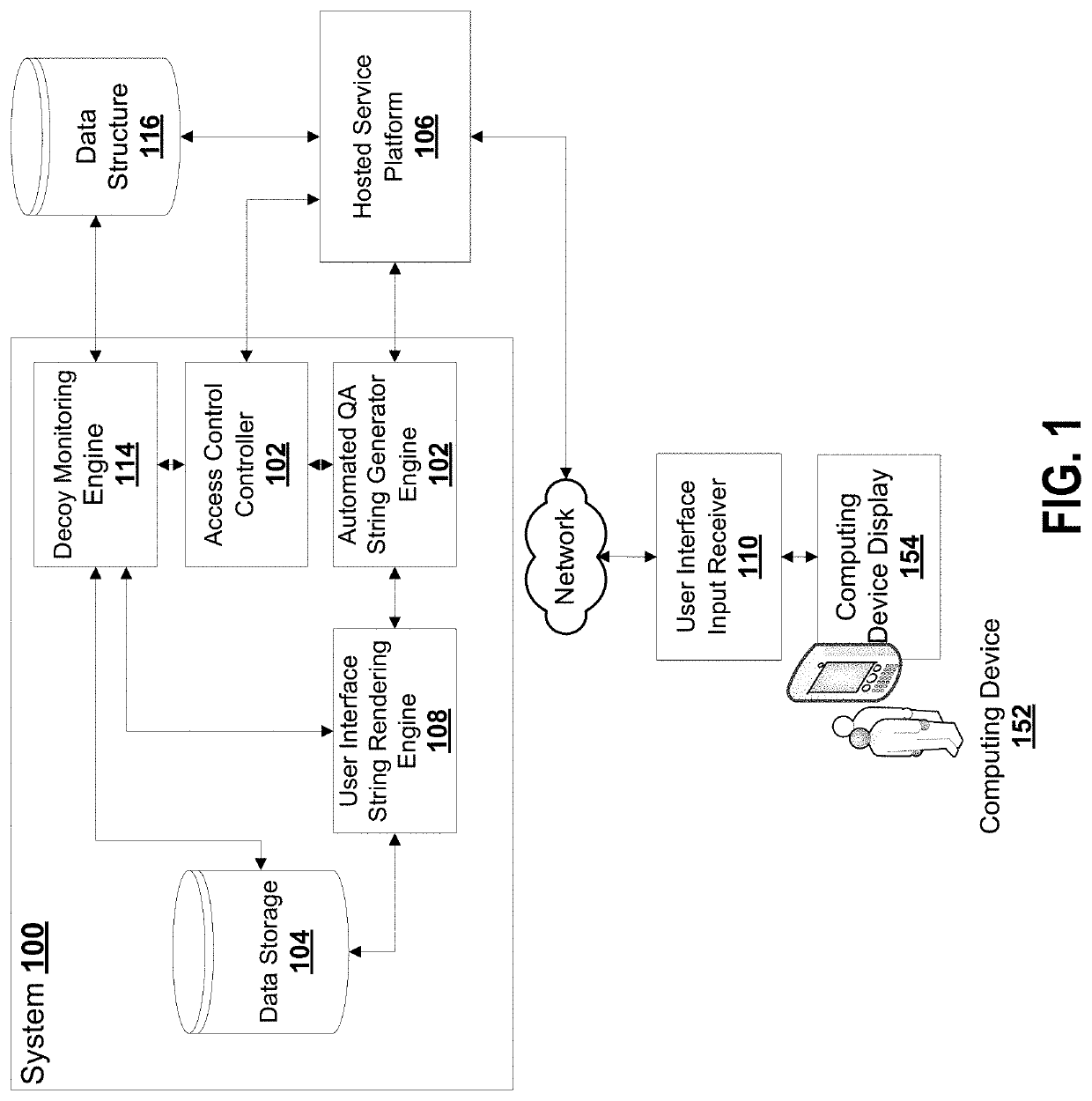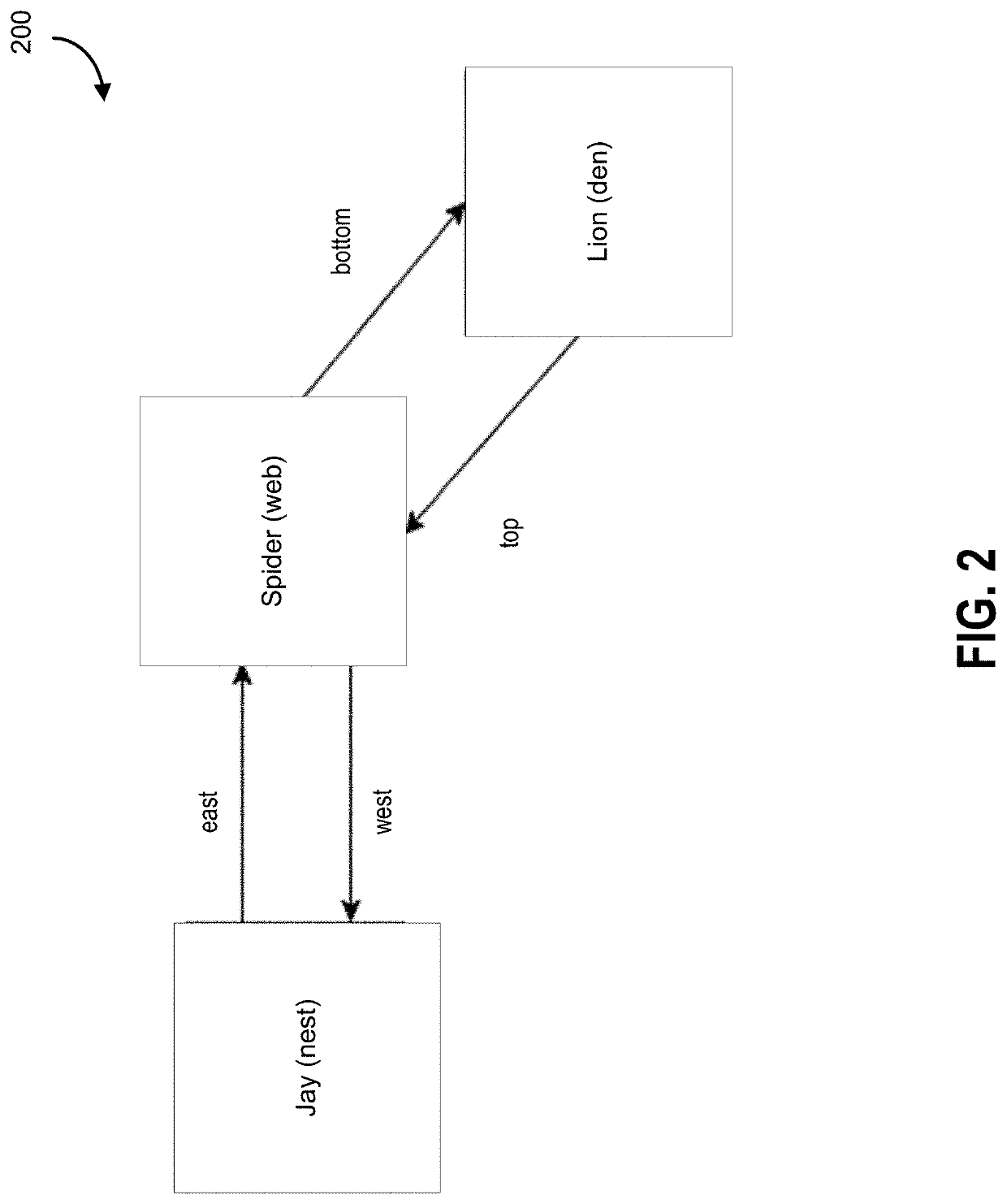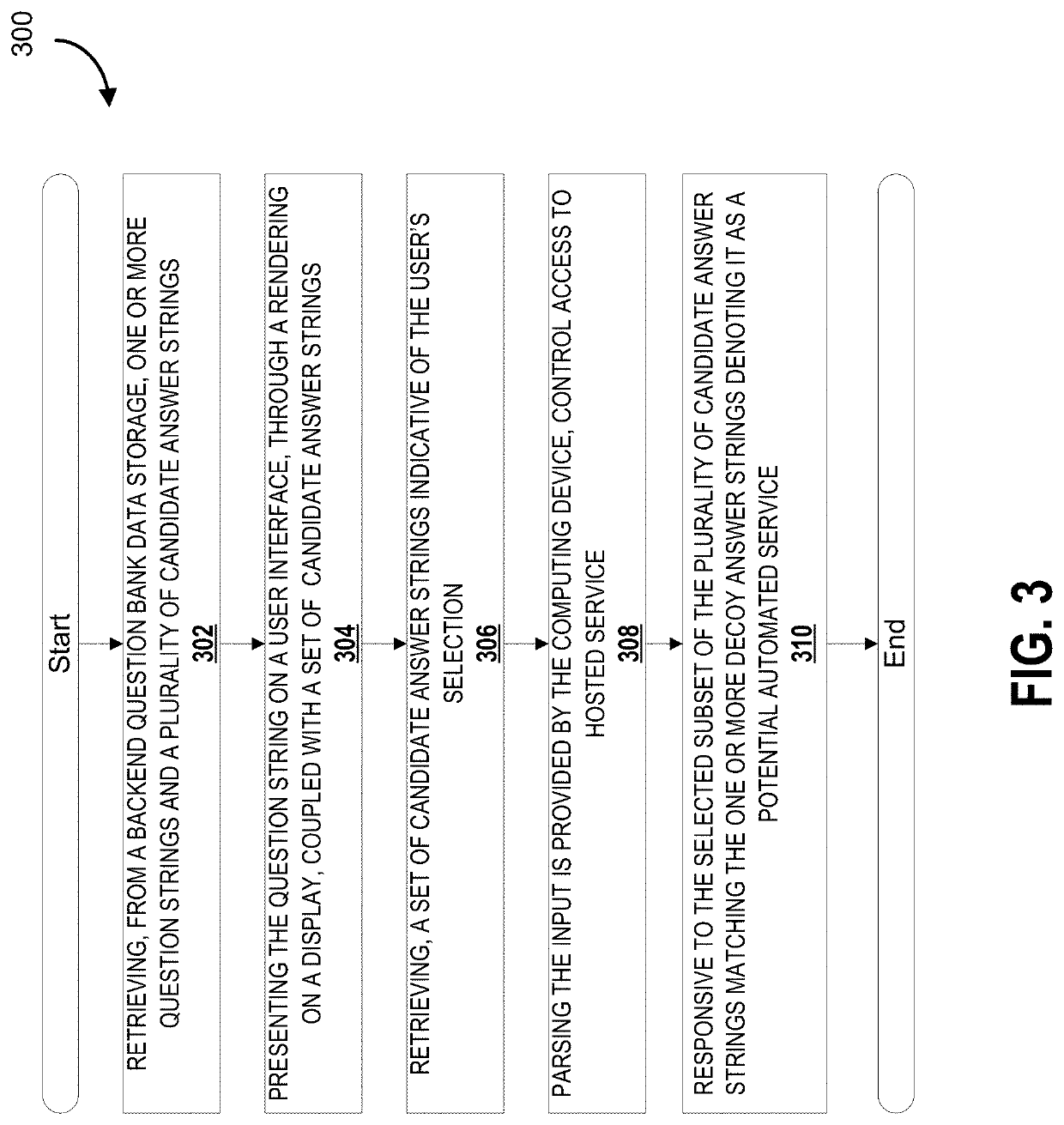System and method for reverse-turing bot detection
a bot detection and reverse-turing technology, applied in the field of user interfaces, can solve the problems of reducing the effectiveness of captchaTM, less and less websites are using the captchaTM system, and the captchaTM becoming unsuitable for separate persons from computers, so as to reduce the volume of challenge request generation and less data storage
- Summary
- Abstract
- Description
- Claims
- Application Information
AI Technical Summary
Benefits of technology
Problems solved by technology
Method used
Image
Examples
Embodiment Construction
[0045]As noted in a paper by SivaKorn el al., both CAPTCHA™ and reCAPTCHA™ could be cracked by an automated system, and thus there are technical deficiencies that could lead to automated systems masquerading as human actors. This could be a significant problem as automated bots could be used to scrape websites for information, sign up for human-only offers (e.g., credit cards, banking products), among others. For example, a newspaper could be overwhelmed with billions of new subscribers purporting to be humans requesting a free week of newspaper delivery to fictitious addresses.
[0046]Malicious users have evolved their approach to challenging access controlled systems. Older, simpler approaches such as brute force based and dictionary attacks have been rendered ineffective through improved security protocols. CAPTCHAs were effective for a time to distinguish between human users and automated users. However, CAPTCHAS are vulnerable over time to machine learning based malicious systems...
PUM
 Login to View More
Login to View More Abstract
Description
Claims
Application Information
 Login to View More
Login to View More - R&D
- Intellectual Property
- Life Sciences
- Materials
- Tech Scout
- Unparalleled Data Quality
- Higher Quality Content
- 60% Fewer Hallucinations
Browse by: Latest US Patents, China's latest patents, Technical Efficacy Thesaurus, Application Domain, Technology Topic, Popular Technical Reports.
© 2025 PatSnap. All rights reserved.Legal|Privacy policy|Modern Slavery Act Transparency Statement|Sitemap|About US| Contact US: help@patsnap.com



